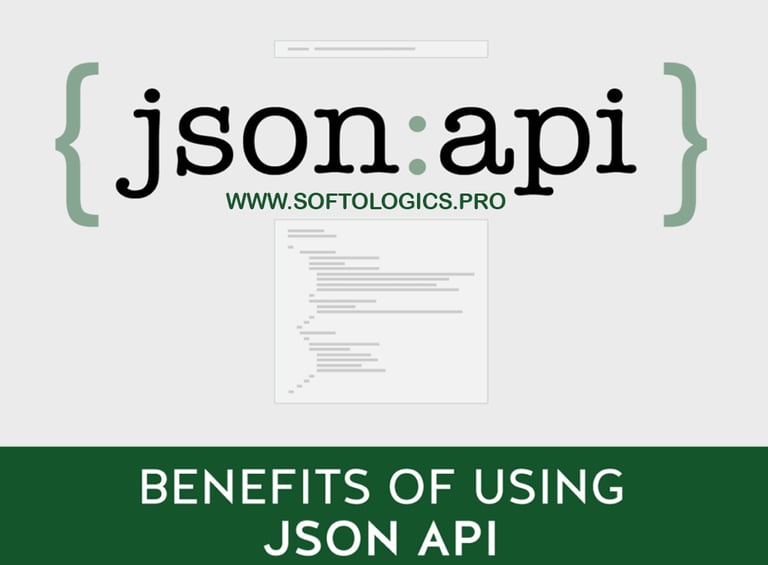
Unleashing the Power of APIs and JSON: A Comprehensive Guide
Master API integration and JSON parsing with expert insights. Explore best practices, security measures, and SEO optimization for seamless development.
TECHNICAL WRITING
Yamama Khan
10/5/20233 min read
Unleashing the Power of APIs and JSON: A Comprehensive Guide
Master API integration and JSON. Explore best practices, security measures, and SEO optimization for seamless development


Introduction Of Json Apis
In the ever-evolving landscape of technology, Application Programming Interfaces (APIs) have become the backbone of seamless communication between different software systems. This article explores the significance of APIs and delves into the role of JSON (JavaScript Object Notation) language in leveraging the potential of APIs.
Understanding APIs: A Foundation for Integration
APIs Defined
APIs, or Application Programming Interfaces, serve as intermediaries that enable one software application to interact with another. They define the rules and protocols for communication, allowing developers to access specific functionalities or data without delving into the internal complexities of the underlying systems.
Key Benefits of APIs
Interoperability: APIs facilitate interoperability by allowing different software systems to work together, promoting a cohesive technological ecosystem.
Efficiency: Developers can save time and resources by leveraging existing APIs rather than building functionalities from scratch.
Scalability: APIs enable easy scaling of applications by providing a structured interface for integration with external services.
JSON Language: The Lingua Franca of Data Exchange
Introduction to JSON
JSON, standing for JavaScript Object Notation, is a lightweight data interchange format that is easy for humans to read and write, and easy for machines to parse and generate. It has become the de facto standard for data exchange between web servers and browsers, making it a crucial component in API communication.
Why JSON?
Readability: JSON's simple syntax makes it human-readable, aiding developers in understanding data structures effortlessly.
Lightweight: JSON is lightweight, leading to faster parsing and reduced bandwidth consumption.
Language Independence: JSON is language-independent, allowing it to be used with a variety of programming languages.
Utilizing APIs with JSON: A Dynamic Duo
API Requests and Responses
HTTP Methods in API Calls: Understanding HTTP methods, such as GET, POST, PUT, and DELETE, is crucial for making API requests to retrieve or manipulate data.
JSON as a Data Format: APIs commonly use JSON to structure data in requests and responses, creating a standardized format for data exchange.
Common JSON Structures in API Communication
Objects and Arrays: JSON utilizes objects and arrays to represent complex data structures, providing a flexible format for conveying information.
Key-Value Pairs: JSON employs key-value pairs to organize and label data elements, ensuring clarity in data representation.
Best Practices for API Integration with JSON
Error Handling with JSON
Standardized Error Responses: Implementing a consistent format for error responses in JSON ensures that developers can easily identify and address issues during API integration.
HTTP Status Codes: Leveraging HTTP status codes in conjunction with JSON allows for a comprehensive understanding of the outcome of API requests.
Security Considerations
Authentication with JSON Web Tokens (JWT): Implementing secure authentication mechanisms, such as JWT, enhances the overall security of API interactions.
SSL/TLS Encryption: Encrypting data with SSL/TLS protocols ensures secure data transmission between clients and servers, mitigating the risk of unauthorized access.
SEO-Optimized Integration: Keywords for Success
Choosing SEO-Friendly Keywords
API Integration Best Practices
JSON for Beginners
API Security Measures
Efficient API Communication
JSON Parsing Techniques
Scalability through APIs
Optimizing API Requests
JSON Schema Design
Incorporating Keywords into Content
When discussing API integration best practices, emphasize the importance of choosing the right HTTP methods for efficient communication.
In the section on JSON for beginners, highlight the readability and lightweight nature of JSON as key features.
Explore SEO-friendly phrases like "boosting application scalability through APIs" when discussing the advantages of APIs.
Linking to Softologics.pro: Elevating Your API Integration Game
As you embark on your journey to master APIs and JSON, consider leveraging the expertise of Softologics.pro, a leading force in the realm of software development and integration. Visit Softologics.pro to explore cutting-edge solutions that optimize API utilization, enhance JSON parsing techniques, and ensure the security of your digital endeavors.
Conclusion: Empowering Development with APIs and JSON
In conclusion, the synergy between APIs and JSON has revolutionized the way developers build, integrate, and scale applications. Understanding the intricacies of API communication and embracing the simplicity of JSON ensures a seamless and efficient development process. As technology continues to advance, mastering the art of API integration and JSON utilization, with the support of industry leaders like Softologics, will undoubtedly remain a cornerstone for building robust and interconnected software solutions.
